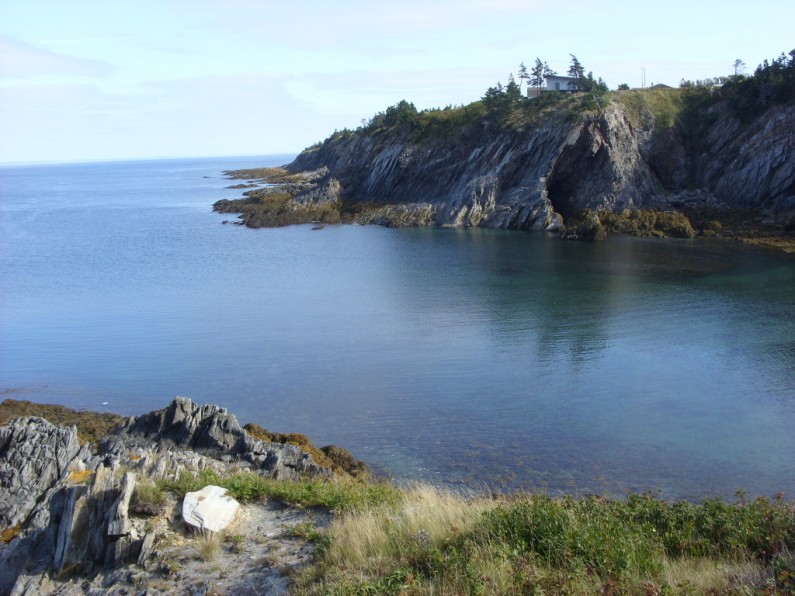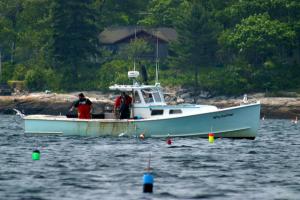

On a Friday morning, late in May 2018, a reporter for The New York Times met with fishermen at the Surfside Café in Vinalhaven, Maine. They talked about this year’s haul and some of the fishermen thought it was just too early in the season to worry about their catch.
Many of Maine’s fishermen believe the low catch is a sign of things to come. Since the early 1980s climate change has caused the Gulf of Maine’s waters to warm to ideal temperatures for lobsters. The warm waters helped to grow Maine’s fishery fivefold to a half-billion-dollar industry. It is among the most valuable industries in the United States, according to The New York Times.
Last year, the catch dropped to 111 million pounds, 22 million less than usual.
Due to the drop, researchers and fishermen fear that the waters are becoming too warm for the lobsters. They are wondering how much longer the fishing boom will last.
Fisherman Dave Cousens said that climate change helped the fishermen over the last 20 years and believes it may hurt them over the next 30 years.
According to scientists, there were multiple factors that contributed to the lobster boom that began in the ‘80s, including the overfishing of predators like cod and the fishermen’s conservation efforts. However, it was climate change that made lobster fishing the success it is today, according to Richard A. Wahle, who is a professor at the University of Maine’s School of Marine Sciences.
For most of this century, the Gulf of Maine has warmed faster than 99 percent of the oceans across the globe and it was driven by climate change along with natural variation.
By the year 2050, the waters could warm too much and cut the lobster population in Maine by 62 percent, states the Gulf of Maine Research Institute. This has left some fishermen feeling anxious.
Cousens fishes off the coast of Spruce Head, Maine and hauled in many disappointing traps at the end of May. It was still early in the season, but he was disheartened. He said he was worried about the future. Maine fishermen could catch less lobsters in the peak-summer season than they currently do in the spring.
“We’re past the point of climate change helping us. We’re on the downward spiral,” Cousens said.
In the ‘90s, Cousens would haul up to 80,000 pounds of lobster a year. However, last year his annual earnings fell 30 percent.
As the temperatures in the Gulf of Maine increased, favorable conditions for lobster reproduction shifted northeast, toward the islands of Stonington and Vinalhaven, in the direction of Canadian waters, away from Cousens fishing area.
Cousens stated, “You don’t have to be a rocket scientist to say this does not bode well for us.” He is worried about the younger fishermen who have invested hundreds of thousands of dollars into gear, trucks, and boats. These young men and women have not experienced the fishery outside of the lobster boom. Cousens believes they are basing their future on a dream that will not come true. However, it does not worry his 24-year-old son, even though his boat, “Adrenaline” sent him more than $200,000 into debt. Samuel says, he just puts his head down and works.
He will often fish for 14 hours a day, 35 miles from the mainland. This is normal for young fishermen. They are pushing out farther offshore in larger, faster, and more expensive boats. The lobster population is expanding northeast and thriving in deeper waters as the coastal waters continue to warm, say scientists.
According to Cousens’s son, fishing offshore is high-risk and high-reward. He stated that hauling a trap into a boat is “exhilarating.” “You either see dollar signs or dirt.”
Lobster fishing is a boom-and-bust business; however, the conservation measures enforced by Maine’s fishermen may help stave off a complete collapse, state scientists.
Fisherman clip the tails of the egg-bearing females and release them back into the ocean. This practice is called V-notching, and it began voluntarily near the end of the 19th century. V-notching is currently mandated by law. Lobsters that have been V-notched are thrown back, as well as lobsters that are smaller than 3.5 inches or over 5 inches. They are measured from the eye socket to the base of the tail. These measures preserve the brood stock and ensure that the lobsters continue to repopulate.
A recent study, published in the National Academy of Sciences, discovered that the conservation measures capitalized on the favorable conditions created by climate change and saved the industry from a sharp decline in the future.
Andrew Pershing, the chief scientist at the Gulf of Maine Research Institute and lead author of the study said, “It allowed them to take advantage of the boom, and it’s going to give them some resiliency to the changes that we think are coming.”
To understand the role that the conservation measures played in the broader context of climate change, Dr. Pershing and his colleagues modeled the Maine fishery against those in Long Island Sound and Rhode Island, where such measures were not mandated. In those regions, warming waters led to an almost 80 percent decline in the lobster stock and the collapse of the fisheries.
A seven-to eight-pound female lobster can carry around 100,000 eggs and roughly one percent survive. Cousens exclaimed, “That’s a big bang for your buck! You want to be gentle with them. That’s the future.”
A professor of anthropology at the University of Maine, James M. Acheson, has written about the attitude of fishermen toward conservation. He said they are strongly in favor of the laws because they are in their best interest. Conservation works.
However, there is only so far these measures can go to preventing the decline of the industry. Lobsters can tolerate a maximum water temperature of 70 degrees Fahrenheit. If the water gets any warmer, the lobsters’ systems begin to shut down, one organ after another, according to Wahle. Consecutive days above 70 degrees will cause mass mortality.
The impact of warmer waters is less understood among lobsters in the earliest stage of their life cycle. Also, despite healthy numbers of brood stock, researchers have notice a collapse in larval lobsters in the Gulf of Maine in recent years.
Curtis Brown said, “We have a multimillion-dollar industry, and a woefully inadequate understanding.” Brown is a fisherman and a marine biologist for Ready Seafood, which is one of the largest exporters of lobster in the state.
By Jeanette Smith
Source:
The New York Times: Climate Change Brought a Lobster Boom. Now It Could Cause a Bust
Featured Image Courtesy of Doug Kerr’s Flickr Page – Creative Commons License
Top Image Courtesy of skylark’s Pixabay Page – Creative Commons License
Inline Image Courtesy of Rob Kleine’s Flickr Page – Creative Commons License


